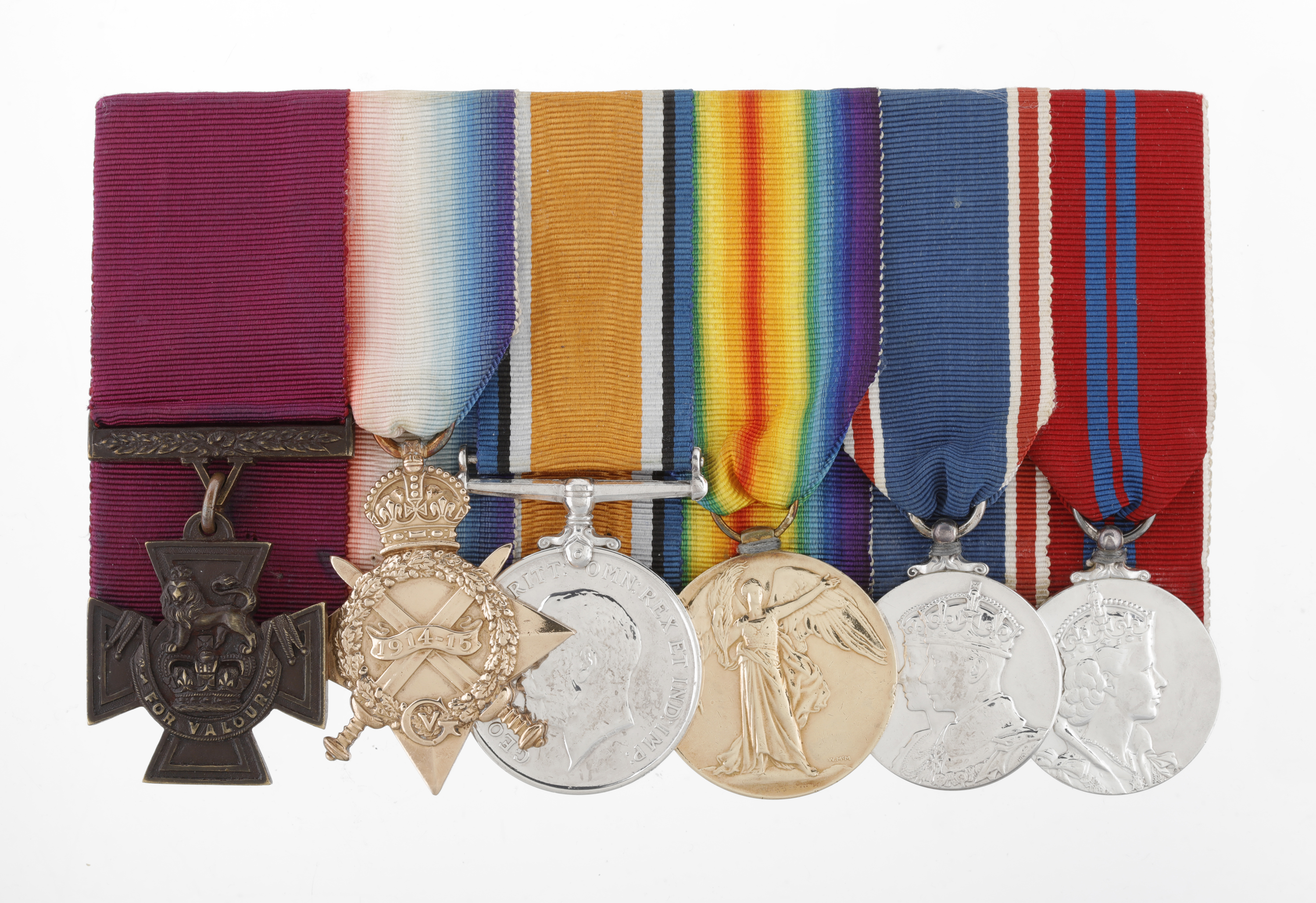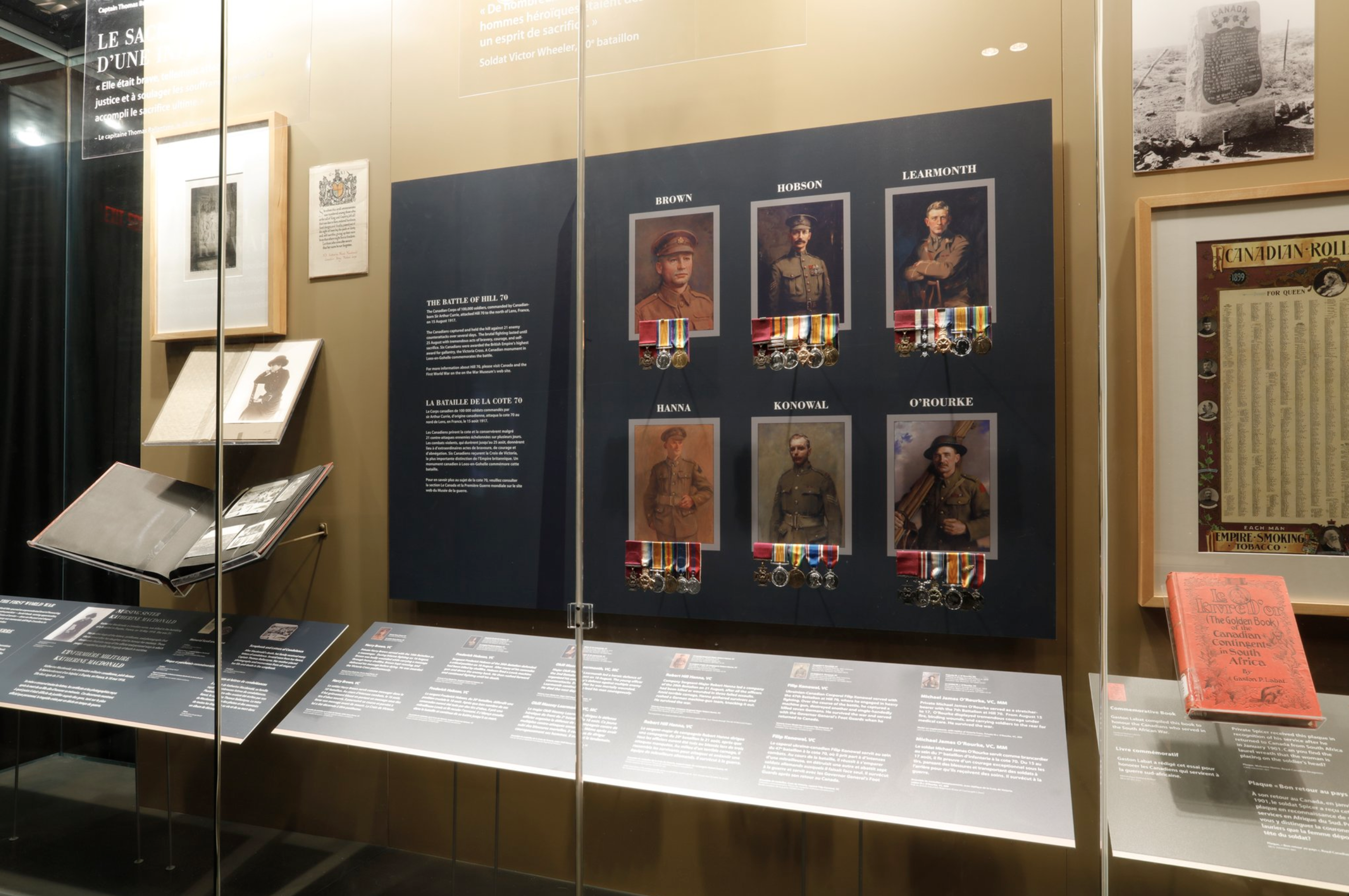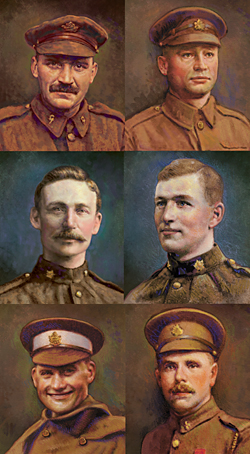
In a particularly graphic description of his Victoria Cross-earning feats on Hill 70, the London Gazette of Nov. 8, 1917, said Robert Hanna, a company sergeant-major in the 29th Battalion (British Columbia Regiment), bayonetted three Germans “and brained the fourth,” thus capturing a position and silencing a machine gun.
All this took place under heavy fire during one of the least-recognized but most challenging Canadian operations of the First World War.
The hill named for its elevation above sea level was located outside the French coal-mining town of Lens, just 10 kilometres from the ridge at Vimy where four months before the Canadians had earned what would be their most famous victory.
The gradual, chalky, barren slope that formed Hill 70 was about half Vimy’s height and less than half its length, yet it took 10 days to wrest it from German hands—more than double what it took to win the long sought-after Vimy.
Hill 70 had been in German hands since 1914. The defenders were tenacious, dug-in and well concealed, and the Canadians were expected to inflict, and incur, major casualties during the August attack.
“The immediate goal of the assault was to seize the dominating high ground north of German-occupied Lens, oblige the enemy to withdraw, and threaten its control of Lille, a major transportation centre,” historian Serge Durflinger wrote in a July/August 2017 cover story for Legion Magazine.

Canadian and British guns fired almost 800,000 shells in the days before the attack, killing, wounding and wearing down the German defenders as well as cutting barbed wire, disabling artillery emplacements, hampering communications and collapsing trenches.
The Canadians fired millions of machine-gun rounds during the battle and faced virtually as many. Royal Engineers launched a covering smokescreen just before the attackers began to move.

Like countless battles over millennia of conflicts, however, the fighting eventually came down to close-quarters, hand-to-hand, life-or-death desperation. There were six Victoria Crosses awarded for individual actions at Hill 70, and all but two of them involved bloody close-quarters fighting.
Heavily protected by wire and putting up “severe resistance,” the enemy strongpoint confronting Hanna had already beaten back three assaults, inflicting heavy casualties. All the Canadian officers would end up dead or wounded.
In the face of rifle and machine-gun fire, the Irish-born lumberman who had signed up in Vancouver and was now the senior NCO of ‘B’ Company, “coolly” took it upon himself to assemble a party of men and lead them across the wire, bayonetting and smashing his opponents with his rifle butt.
Hanna, 30, “displayed courage and personal bravery of the highest order at this most critical moment of the attack [and] was responsible for the capture of a most important tactical point,” said the Gazette. “But for his daring action and determined handling of a desperate situation, the attack would not have succeeded.”

He was born near Hanna’s Close in Kilkeel, Northern Ireland, and to this day his personal sword hangs on the wall of the Kilkeel Royal British Legion. Hanna died in Mount Lehman, B.C., on June 15, 1967. He is buried in Burnaby’s Masonic Cemetery.

The Canadian Corps suffered 1,877 killed and more than 7,000 wounded or missing in action at Hill 70.
Four of the six Hill 70 VCs are in the collection of the Canadian War Museum—Hanna’s was the most recent acquisition, last November—and all six have recently been put on display together for the first time.

- Private Michael O’Rourke from the 7th Battalion (1st British Columbia), who evacuated wounded men almost constantly for 72 hours. He was nearly killed by shell bursts at least three times. O’Rourke struggled after the war, scrabbling a meagre subsistence on Vancouver’s skid road, surviving on a $10-a-month disability pension and casual dock work. He headed a 1,000-man protest march during a longshoremen’s strike in 1935, wearing his medals and carrying the union flag. The marchers attempted to pass a police line and were attacked with clubs and tear gas in what came to be known as the Battle of Ballantyne Pier. O’Rourke died in 1957 at 78.
- Acting Corporal Filip Konowal, 47th Battalion (British Columbia), was a 29-year-old Ukrainian immigrant who had been a hand-to-hand combat instructor in the Imperial Russian Army. At Hill 70, he led his section into cellars, craters and machine-gun nests on a mop-up operation. “In one cellar he himself bayonetted three enemy and attacked single-handed seven others in a crater, killing them all.” He also took out a machine-gun nest, killing the crew and bringing the gun back to the Canadian lines. “The next day he again attacked single-handed another machine-gun emplacement, killed three of the crew, and destroyed the gun and emplacement with explosives.” He killed at least 16 enemy over two days before he was severely wounded. Back in Canada in 1919, Konowal broke up a fight and fatally stabbed an Austrian bootlegger with one strike. He told police: “I’ve killed 52 of them; that makes the 53rd.” Veterans rallied to his cause, ponying up his bail money. Tests revealed that Konowal was suffering from increasing pressure on his brain from a wartime gunshot wound to the head; doctors concluded he was likely mentally unstable and experiencing flashbacks. He was found not guilty by reason of insanity and institutionalized for seven years. He later became a House of Commons caretaker until Prime Minister Mackenzie King secured him a lifetime job in his personal office. Konowal died in 1959 at age 70.
- Private Harry Brown of the 10th Battalion, CEF, was caught in a counterattack with a group of Canadians. Communications had been cut; Brown and another soldier were dispatched with identical messages. The other messenger was killed. “Private Brown had his arm shattered but continued on through an intense barrage until he arrived at the close support lines and found an officer,” said his citation. “He was so spent that he fell down the dugout steps, but retained consciousness long enough to hand over his message, saying ‘Important message.’” He then lost consciousness and died in the dressing station a few hours later. He was just 19. “His successful delivery of the message undoubtedly saved the loss of the position for the time and prevented many casualties.”
- Sergeant Frederick Hobson of the 20th Battalion (Central Ontario) was 43 years old and a British Army veteran of the Boer War. A critical Lewis gun was buried by a shell and all but one of the crew killed. “Sgt. Hobson, though not a gunner, grasping the great importance of the post, rushed from his trench, dug out the gun, and got it into action against the enemy who were now advancing down the trench and across the open. A jam caused the gun to stop firing. Though wounded, he left the gunner to correct the stoppage, rushed forward at the advancing enemy and, with bayonet and clubbed rifle, single handed, held them back until he himself was killed by a rifle shot.” He had bought the gunner enough time, however, to get the weapon back into action. Reinforcements arrived shortly afterward and the enemy was repulsed. “The valour and devotion to duty displayed by this non-commissioned officer gave the gunner the time required to again get the gun into action, and saved a most serious situation.”
- Acting Major Okill Massey Learmonth of the 2nd Battalion (Eastern Ontario Regiment) responded to an enemy surprise attack by charging and dispatching them. “Later, he carried on a tremendous fight with the advancing enemy,” said the Gazette. “Although under intense barrage fire and mortally wounded, he stood on the parapet of the trench, bombed the enemy continuously and directed the defence in such a manner as to infuse a spirit of utmost resistance into his men. On several occasions this very brave officer actually caught bombs thrown at him by the enemy and threw them back.” Eventually, the severely wounded Learmonth was unable to carry on the fight, yet “he still refused to be carried out of the line, and continued to give instructions and invaluable advice to his junior officers, finally handing over all his duties before he was evacuated from the front line to the hospital where he died.”
The only memorial in Canada exclusively dedicated to the Canadians’ deeds at Hill 70 is a modest monument erected in a park in the eastern Ontario hamlet of Mountain Station in 1925. It was recently renovated and rededicated.

Advertisement











